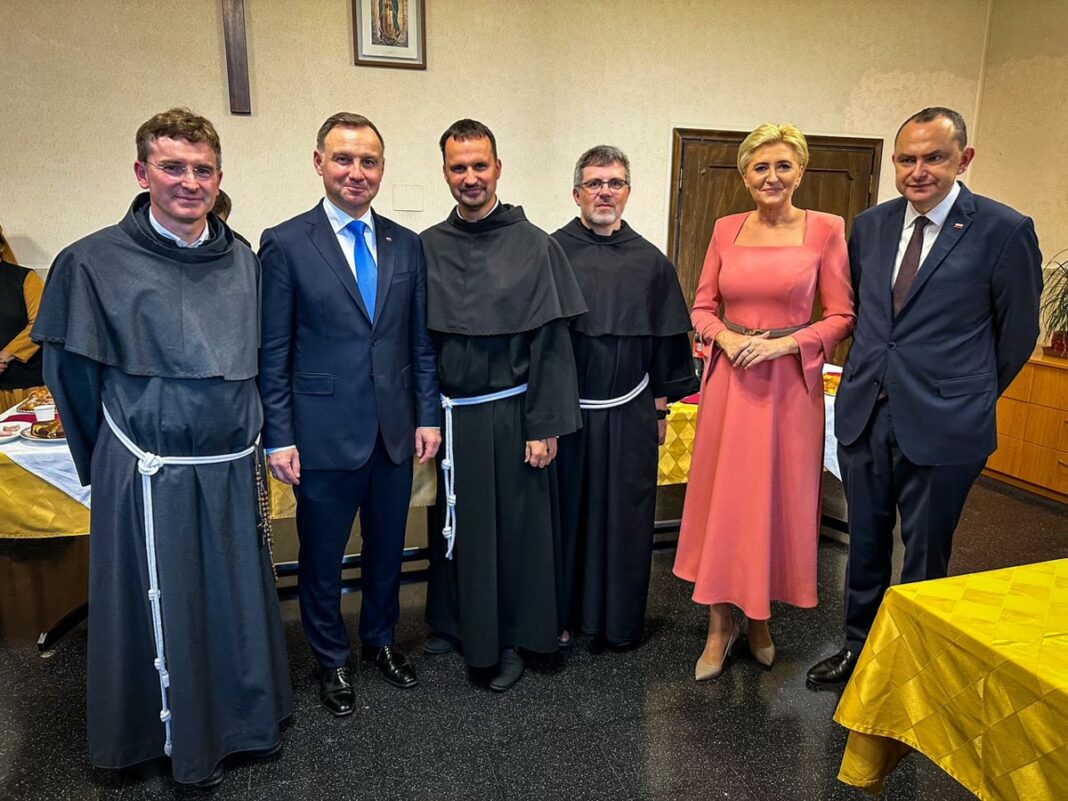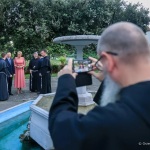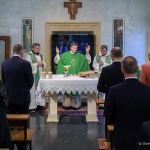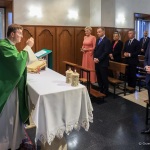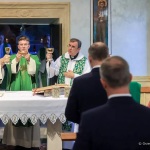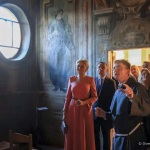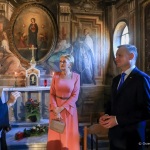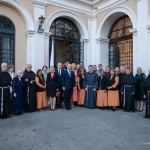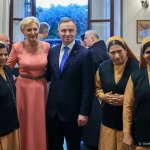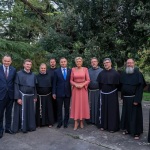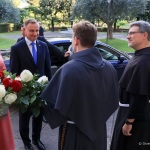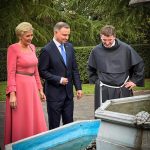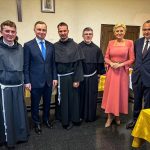On October 16, 2022, the President of the Republic of Poland, Andrzej DUDA and his wife, Agata KORNHAUSER-DUDA, visited the community of St. Anthony at the Baths (Vigna) in Rome.
Also present were the Ambassador of Poland to the Vatican, Adam KWIATKOWSKI with his wife; the Ambassador of Poland to Italy, Anna Maria ANDERS—the daughter of General Władysław ANDERS; and the Ambassador of Poland to the Food and Agriculture Organization of the United Nations, Artur POLLOK with his wife.
The visit was private in nature. The central event was the Mass celebrated at 5:15 p.m. by the Guardian Friar Robert LEŻOHUPSKI and concelebrated by other friars from Poland who reside at General Houses in Rome and in the General Custody of the Sacred Convent of Assisi. The Secretary General of the Order, Friar Tomasz SZYMCZAK, gave the homily. The Mass was attended by the closest collaborators of the President of the Republic of Poland. After the Mass, a commemorative photo was taken, refreshments were served and there was a visit to the friary garden. It is worth noting that, apart from the visit of Pope Gregory XVI in the summer of 1834, this is the first documented case of a visit by a head of state to our friary. The history of our friary dates back to 1555. We know for sure that St. Ignatius of Loyola stayed at the “Vigna” [vineyard] during the last month of his life and probably died here, according to one school of thought. The Holy of Holies and jewel of the friary is the room that St. Ignatius stayed in. It was later transformed into a chapel to honor the beatification of the founder of the Jesuits in 1609. After a series of different owners, the Vigna passed to the Conventual Franciscans in 1822. Thereafter, it became a special place for successive generations of religious, including St. Maximilian Mary Kolbe. It was here that St. Maximilian, as a seminarian, according to his writings, suffered a sudden decline in health and spent time planning the foundation of the Militia of the Immaculata. The friary became its main headquarters and featured a printing press. In modern times, the friary has become a formation house for the Order’s doctoral students. This year the community consists of seventeen friars (average age 40) from eleven countries, namely, Ghana, India, England, Kenya, Mexico, Poland, the United States, Venezuela, Zambia, Costa Rica and the Czech Republic.
Friar Javier Antonio RAMÍREZ RICO






